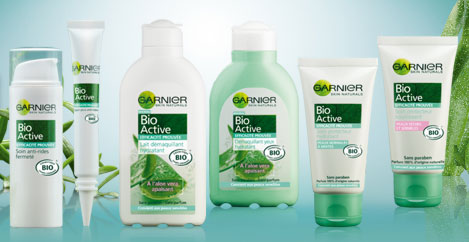Have you ever tried to make your own cosmetic products? Mixing yogurt, almond powder and raw sugar to obtain a natural exfoliating? Or avocado, honey and olive oil for a perfect moisturizing mask? Sounds quite mouth-watering … If bloggers are already surfing on this new wave by proposing you homemade alternatives to conventional cosmetics, brands are also trying to do so by developing specific organic ranges.
Today, women consume more and more natural cosmetics. In France, one on three women buy regularly those kind of products, it is the second biggest European market after Germany. The main motivations are their health and the willingness to respect the environment. So far, boys still feel less concerned about it and don’t represent the core target of the brands. Since 2005, in France, the market of organic and natural products has increased about 25 %, and was estimated at 500 million euros in 2015, with an annual rate of growth of 10%1. Who wouldn’t dream a cream composed of ingredients 100 % natural and without perfumes, coloring, preservative, OGM, paraben or pheronyethanol?
As you understood, it is a new trend and a blooming market for brands willing to diversify their activity. Those products are now accessible to the majority due to more attractive prices since the ultimate years. Natural brands such as Kesari or Kibio have multiplied, competing with historic one like Weleda or Caudalie. Moreover, several national brands such as Garnier or Mixa are also launching an organic range to catch up with this trend2.
Let’s go deeper with the new comer: Kesari! Do you know saffron? Famous to be the most expensive spicy in the world, could you believe a kilo is worth 30 000 euros ??? Initially it is a flower, consider you need about 200 000 to produce one kilo… Mostly used in the Oriental and Indian cooking, Kesari decided to utilize these petal flowers as core ingredient of its cosmetics, giving the brand a real luxury and unique positioning! Kesari has been created in 2010, and proposes a wide range of organic and anti-wrinkle creams. Saffron confers them an antioxidant power 100 times more effective than a bunch of grapes. Very bad new for Caudalie that bases its branding on the vinotherapy! The creator of Kesari took advantage of the fact that this flower was not exploited yet in the cosmetic market. Indeed, it is the only brand to use saffron petal flower to create unique and highly innovative anti-wrinkle products. The range is 100% made in France with flowers collected in Provence. Moreover, they benefit from the so called organic label Ecocert! To sum up, Kesari products gather all the advantages women are looking for nowadays. They answer to their concerns, proposing authentic products and using the power of flowers. However, the brand decided to have a niche market positioning. For that, Kesari conduct testimonials from a specific type of consumers, which permits it to collect the best recommendations possible. Kesari sends samples at the house of its targeted customers. They are guide with a letter highlighting the benefits of its products and promoting the brand. This letter also give advice, to make sure you will be beautiful and young forever! Kesari means saffron flower in Indian language. The brand proposes a perfect union between ancestral Indian traditions and the authenticity of the French Provence. It makes the customer dreams about faraway rituals and at the same time to promote regional products3.

Now, let’s talk about national and entry level brands that are developing natural products. It is the case of Garnier, whose parent’s brand is L’Oreal. It has launched Garnier Bio Active in 2011, a beauty and skin care range4. The brand communicates about its environmental responsibility regarding the development of its product. The active ingredients are marine plants and aloe vera, recognized to be powerful anti-aging and purifying agents. They are certified without paraben, silicone, petrochemical oils and are certified by Ecocert5. Besides developing specific range among its former brands, L’Oreal also acquired eco-responsible and natural cosmetic brands such as Sanoflore or The Body Shop. L’Oreal strategy consists in investing and acquiring natural cosmetic companies to remain competitive and to surf on the current trend6!
The organic cosmetic market is also blooming in China, representing 6.8 % of the cosmetic market in 20116. China is the largest market for cosmetic product in Asia, the second being Japan. Chinese cosmetic market has grown tremendously during the ultimate decade. So, it seems almost obvious that consumers are now interesting in the last organic trend. Chinese people know about the benefits of those products and are willing to pay more if it is better for their health. However, many green brands such as Weleda decided to boycott China because of animal testing requirement. Weleda decided to go to Japan were the law respects its core value. According to the marketing manager of Weleda in Japan, consumers started to show a real interest in organic cosmetic after the Fukushima nuclear disaster7. To market its brand in Japan, Weleda has open four dedicated shop proposing 4000 different products. Weleda understood its consumers are constantly seeking innovation, that’s why the brand is always trying to create new products with innovative material8.

The organic cosmetic market is very remunerative and essential now in the strategic brands management. It has become a global trend, however, most of the sales still remain concentrated in Europe and North America. We noticed that this trend reaches the luxury as well as the entry level brands. In a word, it is the FUTURE of the cosmetic industry!
Your devoted mascara addict, Coralie.
[1] Sabrina Bouarour. (2012). Green wave has surged in France, Womenology. ONLINE. Available at http://www.womenology.fr/reflexions/la-tendance-green/ Last Accessed: 21 Nov’16.
[2] Anonymous. Cosmétique bio: on mise sur la beauté naturelle, Marie Claire. ONLINE. Available at: http://www.marieclaire.fr/,cosmetiques-beaute-bio-naturelle-ou-ecolo,20145,412027.asp Last Accessed: 21 Nov’16.
[3] Carole. (2014). Kesari, la beauté anti-âge safran, Doux Good. ONLINE. Available at: http://blog.doux-good.com/doux-good-presente-kesari-la-beaute-safran/ Last Accessed: 21 Nov’16.
[4] Anonymous. (2011). Le bio a définitivement percé en grandes surfaces, LSA. ONLINE. Available at: http://www.lsa-conso.fr/le-bio-a-definitivement-perce-en-grandes-surfaces,119198 Last Accessed: 21 Nov’16.
[5] Désirée de Lamarzelle. Quand le beau se met au bio, Marie Claire. ONLINE. Available at: http://www.marieclaire.fr/,cosmetique-beaute-nouveau-bio-ecologie,20392,406137.asp Last Accessed: 21 Nov’16.
[6] Anonymous. (2016). Organic Cosmetics in China: Is Natural Better, Daxue consulting. ONLINE. Available at: http://daxueconsulting.com/organic-cosmetics-in-china/ Last Accessed: 21 Nov’16.
[7] Vincent Gallon. (2015). Natural and organic cosmetics appeal to Asian consumers, Premium beauty news. ONLINE. Available at: http://www.premiumbeautynews.com/en/natural-and-organic-cosmetics-boom,7394 Last Accessed: 21 Nov’16.
[8] Vincent Gallon. (2014). Natural and organic cosmetics boom at Cosme Tokyo and Cosme Tech 2014, Premium Beauty News. ONLINE. Available at: http://www.premiumbeautynews.com/en/natural-and-organic-cosmetics,8247 Last Accessed: 21 Nov’16.
Featured image:
Léa. (2015). Les Cosmétiques Naturels, Lelys Avignon. ONLINE. Available at: http://www.lelys-avignon.fr/soin-du-visage/les-cosmetiques-naturels.php Last Accessed 22 Nov’16.
Image 1:
Jessika. (2015). Présentation de Kesari, Lips Pic’n Trips. ONLINE. Available at: http://lipspicntrips.com/?p=740 Last Accessed 22 Nov’16.
